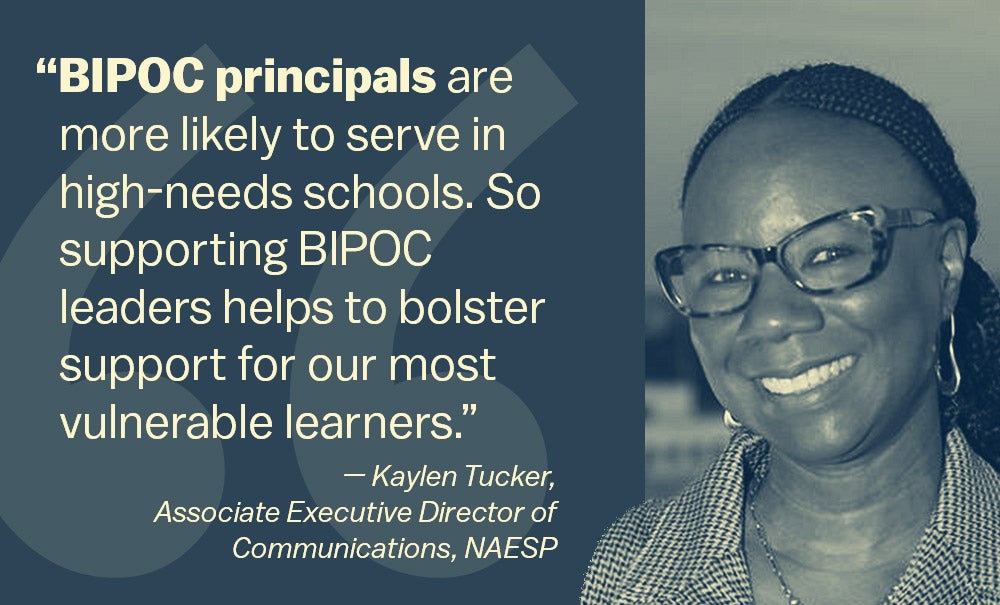A principal pipeline is an approach to school leader development that can have major benefits for school districts, as indicated in groundbreaking research we published recently. Pipelines have four parts—rigorous job standards, high-quality pre-service preparation, selective hiring, and aligned on-the-job support and evaluation. In an occasional series, we examine each of these components by talking to principals in six urban districts that, with Wallace support, tested the pipeline idea. In previous posts, we found out how pre-service training prepared a Georgia principal to improve the graduation rate at his high school, and how on-the-job support helped a new principal in North Carolina gain the skills he needed to succeed. Today, we explore how job standards shaped the leadership development of a principal in Denver.
When Pam Kirk became an assistant principal in 2008, she had a meeting with her new boss at Force Elementary School in southwest Denver. Her principal asked which leadership skills Kirk wanted to work on that year. Kirk wasn’t sure how to answer. As a former third grade teacher, she had never held any leadership positions, let alone given thought to what her leader strengths and weaknesses were. “I came straight out of a classroom to being an AP,” she says. “I was like, ‘I don’t know what I’m supposed to work on. You tell me.’”
Fast-forward more than a decade and conversations about goals and professional growth sound very different in Denver Public Schools. In 2012, the district unveiled its School Leadership Framework, a set of job standards that outlines expectations for principals in six leadership realms and identifies indicators that demonstrate competency in each. Today, the framework informs all aspects of the district’s talent management strategy for school leaders, from training to recruitment, from performance evaluation to succession planning. “It anchors everything we do,” says Mikel Royal, director of school leader preparation and development for Denver Public Schools.
Leader standards may strike observers as the most mundane of the four pipeline components, but the six pipeline districts found them of singular importance, according to research about the implementation of the pipeline effort. This is in part because of how the standards guided the development of the other pipeline components and helped the pipeline as a whole cohere. The new standards replaced what the researchers described as “a loose patchwork of language about school leadership that did not communicate what the district really wanted principals to know and do.” Then, the new standards were often themselves revised, as districts observed the standards in use and saw gaps in them or lack of clarity about important matters, or lists that needed trimming to a few absolute essentials. “Living documents in use” is how the researchers characterized the standards. Moreover, developing standards proved to be by far the least expensive of the pipeline components, according to an initiative cost study. They carried a per-pupil price tag of about 41 cents a year—“remarkably inexpensive” for something so significant, the researchers said.
Kirk’s entry into the principal pipeline coincided with the launch of Denver’s standards’ framework. In 2012, she was among the district’s first educators to participate in Learn To Lead, a yearlong residency program in which aspiring principals work alongside veteran leaders in schools. The program is rooted in the framework, with residents identifying two to three indicators as growth goals for the year. The framework was so new that Kirk had to explain it to her mentor principal.
After her residency, Kirk applied to the hiring pool for principals, a process also closely aligned to the framework. To gauge her readiness as an instructional leader (standard two), for example, Kirk was asked to watch a video of classroom instruction and describe the feedback she would give to the teacher. To assess her skills as a community builder (standard six), district leaders had her role-play a scenario in which upset parents confronted her.
The framework influenced Kirk’s professional growth after she became principal of Asbury Elementary School in south Denver. At a workshop in 2015, she and other school leaders unpacked each standard and reviewed the types of evidence that their supervisors would use to evaluate their performance on a four-point scale: not meeting, approaching, effective and distinguished. That year, principals also set professional goals tied to the framework. Kirk chose to concentrate on creating a more supportive workplace for her staff. “I’m not a warm and fuzzy principal—it’s not a strength of mine,” she says. “The framework makes me focus on it and ensures that I’m bringing those values to my building.”
In 2017, Denver revised the framework with input from principals to define expectations for all members of a school’s instructional leadership team—principal, assistant principal, deans and teacher leaders. Previously, everyone had been evaluated against the principal standards. In the area of instructional expertise, for example, teacher leaders are expected to develop a team of teachers who deliver “joyful, rigorous instruction,” while the principal is tasked with building and empowering the instructional leadership team to ensure engaging instruction for all students. By showing the competency progression, the framework has become a powerful tool for leaders at all levels to “self-assess their progress and have conversations with their supervisor about their growth,” says Royal.
Earlier this year, Kirk used the framework for the first time to evaluate Asbury Elementary’s dean of culture. She was surprised by all the evidence she needed to collect to make an informed assessment. Still, the effort led to a more meaningful conversation with her dean. Rather than a perfunctory review of his evaluation scores, she says, “we focused on the data behind the decision and his next steps moving forward.” Kirk recently took a step forward in her career too. In September, she became the new principal of Southmoor Elementary School in Denver.
Photo of Pam Kirk by Sam Adams/Adams Visual Communications



